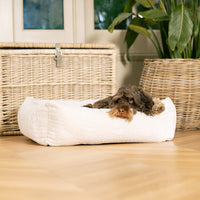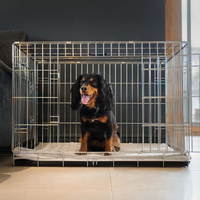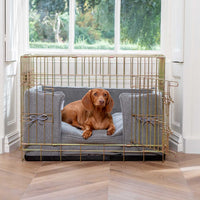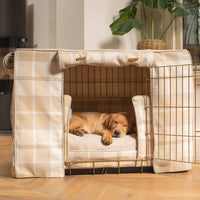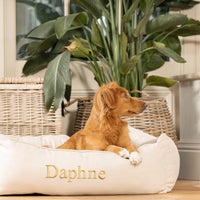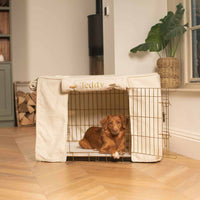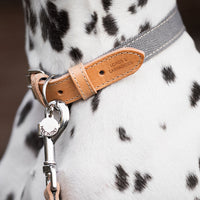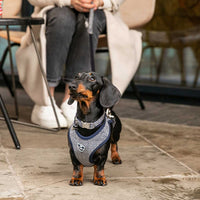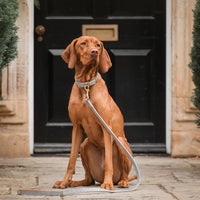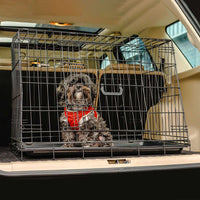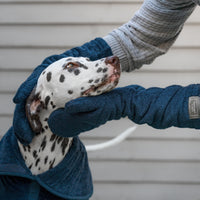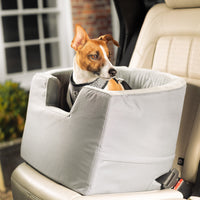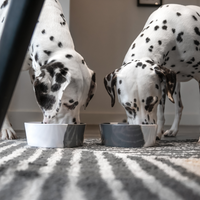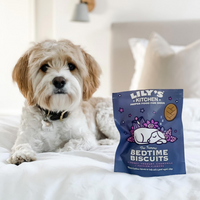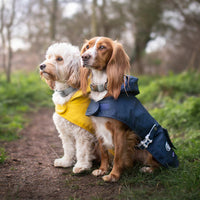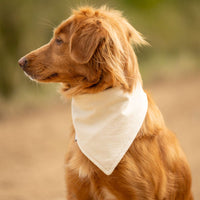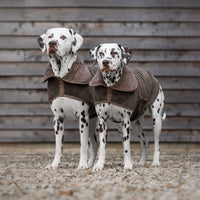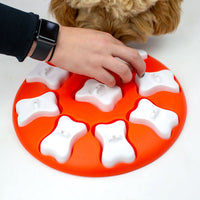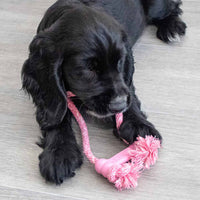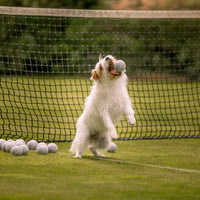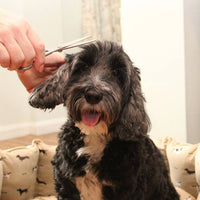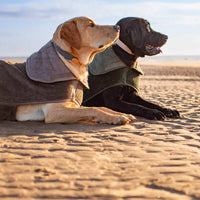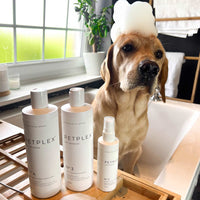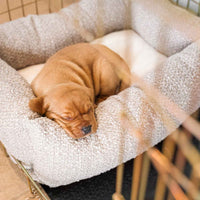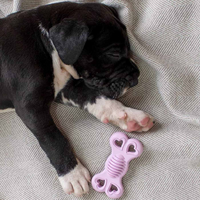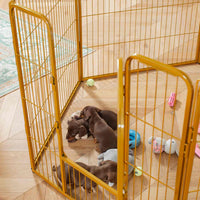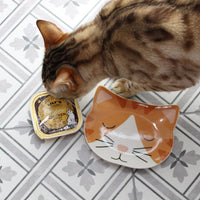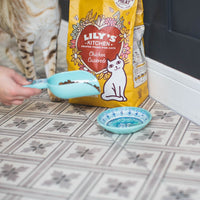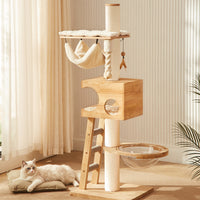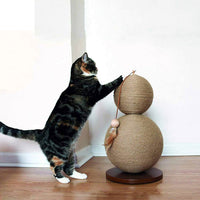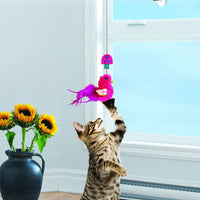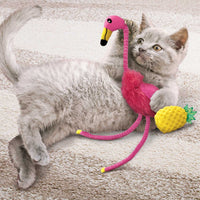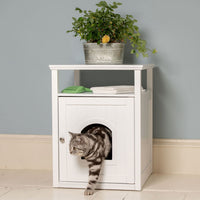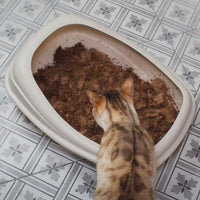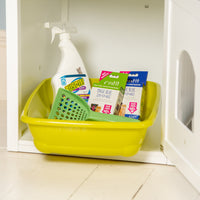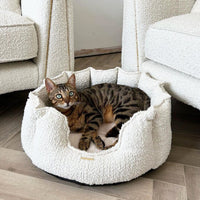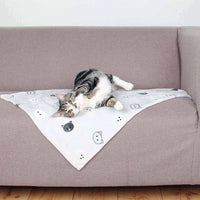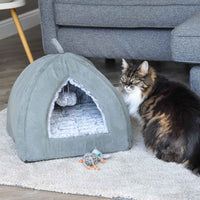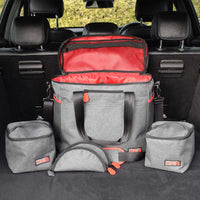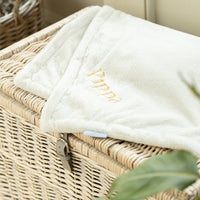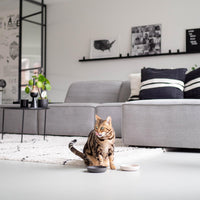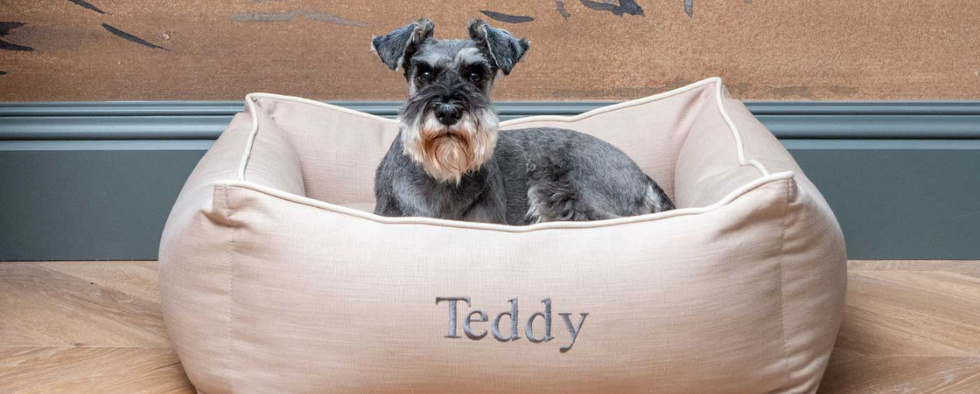Humans spend a third of their lives in bed, so you probably spent ages choosing the right bed and mattress to make sure that you get the best night’s sleep possible and don’t end up like Goldilocks with a bed that’s not right! But what about choosing the perfect dog bed?
A dog can spend a significant amount of time in their bed, and as a beloved member of your family, your furry friend needs a bed that they’re happy and comfortable with. But how exactly do you choose the right bed for your dog?
For many dogs, their bed is an important part of their lives that helps with relaxing, unwinding and gaining some personal space away from humans and other animals. It may be tempting as a dog owner to allow your pooch to carry out their naps in your bed or on other items of furniture around the house, but as a dog bed offers suitable support to your dog and a sanctuary for them during downtime, it’s important they have one.
In this guide we take a closer look at choosing a dog bed, one that’s perfect for dreaming and sleeping all night long!
Do Dogs Need Beds?
On average, dogs spend between 12 and 18 hours of the day asleep, so a bed that’s comfortable, supportive and suits their needs is key for any dog. It’s only natural that your four-legged friend may choose to take power naps beside you on the sofa or even spend moments sleeping in your bed, but a dog bed is an important asset in any dog’s life and it is often recognised as their own environment for having time by themselves, relaxing and unwinding after a long day causing mischief.
Other benefits to dog beds include:
- Contributing to health and comfort
- Easing feelings of stress and anxiety
- Improving the training process
- Offering quality sleep
- Preserving condition of human furniture
- Preventing behavioural issues
How to choose a dog bed
There are loads of dog beds to choose from here at Lords & Labradors but picking the right bed for your dog can be overwhelming. Fortunately, you can use a few key factors to pick out the best option for your dog based on the breed and size of your dog and how they like to sleep.
The key things to think about when choosing a dog bed are
- Size
- Sleeping Styles
- Comfort
How To Choose A Dog Bed Size
Size plays an important role in deciding the correct bed for your dog. If you have a Dachshund, an extra-large bed designed for sprawling out may be excessive, just as you would be lucky to fit any part of a Doberman in a small igloo bed.
A dog bed needs to be big enough for them to comfortably lie in all their favourite positions whilst still being small enough for them to feel cosy & safe in. All our dog beds, here at Lords and Labradors, have a size guide which will help give you an idea of which bed we’d recommend for your breed.
Measuring your dog will help to give you an idea of what size dog bed they will need. To do this, wait until they are sleeping and measure them in centimetres from their nose to their back paws. You should then add around 25 centimetres onto the measurement you’ve taken and a bed with a similar length should be ideal for your furry friend.
How To Choose A Dog Bed Style
As well as the size of your dog, how they sleep is also an important factor to consider. Your dog will give you clues about what bed they’d sleep best in and how they like to sleep every single day. Some dogs love to stretch out, whereas other dogs love to curl up with their nose touching their tail. Here we talk you through the different styles of dog bed and what sleep style they suit.
Mattress Beds/Cushions

Is your dog a side sleeper? Do they love to sprawl out whilst sleeping? Maybe a cushion or a mattress bed is for them, this will give them the space to stretch out whilst still being super comfy. Our crate cushions also work great as standalone cushions for dogs who love their sleep space.
High Wall Beds

The tall squishy walls of a high wall bed are great for dogs who love something to rest their head on whilst still curling up . The high sides will help to keep them feeling safe and secure, so they can really get cosy during nap time. Our high wall beds have a lowered front edge so it’s easy for your dog to get in and out.
Donut Beds
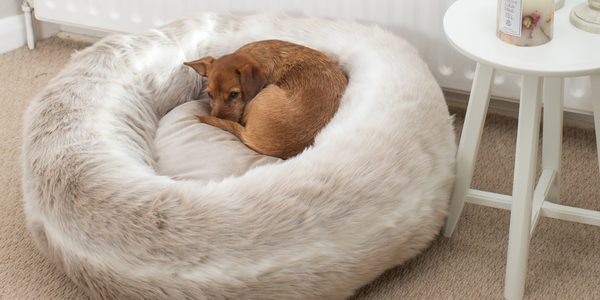
Donut beds as the name suggest are a circle shape with a raised ring round the side. These are great dog bed for dogs who suffer with anxiety and like to curl up in their bed to unwind, the cosy sides will cocoon them and make them feel safe. We’ve made our donut beds with the most sumptuously soft faux fur so it’s perfect for snuggling up in for those all important naps.
Box Beds

Does your dog like to stretch out but still love something to rest their head on? A dog box bed is a perfect choice for them. The square shape means they’ve got plenty of space to stretch out but the padded edges are soft and perfect for hanging their head off whilst napping.
Orthopaedic Beds
Just like we can get orthopaedic mattresses, you can get orthopaedic dog beds. These are a great choice for dogs who have specific health needs, like joint problems or senior dogs who need a little more support. The foam inner on our L&L Orthopaedic mattress has been designed to provide plenty of support for dogs who need it. They’re also low to the floor so they’re easy for dogs with aches and pains to get on and off.
Den Beds

Does your dog like to burrow and hide? Breeds such as Dachshunds and Jack Russels were bred to go to ground when hunting so have a natural instinct to tunnel and burrow, so a den bed is perfect for them. Our den beds are round and have a comfy cushions so are perfect for curling up in but the attached blanket means they can hide and burrow before settling down to sleep.
Picking the perfect puppy bed
Are you getting a new puppy? You’ll probably want to get them a puppy bed before transitioning to an adult bed. Puppy beds are usually slightly smaller than the adult beds to stop your puppy from feeling lost in their new bed. We have two styles of puppy beds here at L&L, both of which have been tested with our own puppies to make sure they’re fit for purpose
Cosy & Calming Puppy Crate Bed

Our cosy & calming puppy beds are exactly as the name suggests, cosy and calming. They have been designed to fill just over half of a dog crate so if you’re crate training your puppy this will help divide their crate and aid their toilet training. The rectangle beds have padded raised walls all the way round for your puppy to snuggle up in and the cushion in the middle is made from the softest fleece, perfect for all those naps your puppy needs!
Grow With Me Puppy Beds
Our newest addition to our bed range, the grow with me puppy beds have high walls to create a feeling of security for nervous puppies. They feature a soft removable ring which you can take out as your puppy grows. This means the bed is never too big for your puppy and it can grow with them. This is perfect dog bed to choose for more nervous puppies or puppies who love to be cocooned and curled up
Do dogs need soft beds?
Dog beds are available in a selection of different materials, so it’s important you choose the most suitable option for your dog. A dog bed needs to be firm enough to offer support to your dog but comfortable enough to make them feel cosy and relaxed.
For puppies, a super soft dog bed with sides to prevent them from tumbling out will make them feel more settled, especially if they’ve recently moved into your home. However, this type of bed may be too small to fit a larger dog, and as older dogs may struggle to get out of a bed that’s particularly spongy, a dog cushion would be more fitting, and it would help to support their ageing joints.
For more destructive dogs you might want a dog bed that’s made out of something more hardwearing, like our Rhino Tough faux-leather beds, rather than a soft furry beds!
How Long Do Dog Beds Last?
Whether your dog is prone to bringing snacks to bed, walking mud all over their bed or scratching at it and kneading it until it feels exactly right, it’s to be expected that it will become damaged and eventually require replacing. A dog bed’s lifespan could be several years if it’s a good quality or a matter of weeks if it’s not.
However, you can extend the time you use a dog bed by washing it as instructed on the label and cleaning away any food or dirt as soon as it comes into contact with it. Dogs are messy creatures by design, but it’s a shame to let them ruin a perfectly good bed, especially if it’s one they’re particularly fond of.
How Often Should You Replace A Dog Bed
As dogs are unpredictable, it’s not always easy to anticipate when they will do something that totally ruins their bed. It may be in good condition for several months before they pull out a thread while scratching it and end up accidentally ripping it open and pulling out all the stuffing. Unfortunately, if this happens, it’s unlikely that you will be able to fix it and the best solution will be to replace it entirely with a new dog bed.
However, you may be wondering when you should give up on your pooch’s bed and invest in a new one. Situations where you should consider replacing your dog bed include when:
- It smells and repeated washing isn’t removing the nasty odour
- It’s infested with fleas and nothing is working to remove them
- The stuffing is falling out, the material is ripped and it’s totally beyond repair.
How Many Dog Beds Should A Dog Have?
All dogs should have at least one bed, but if your dog spends time in different rooms, providing multiple beds can mean that they feel more comfortable in each room and are less inclined to jump on human furniture.
If you have more than one dog, it would be advisable to provide a bed for each of them. However, if they tend to snuggle up together, it could make sense to choose a bed that’s big enough to support both of them.
What Dog Bed Should I Buy?
So, when it comes to identifying the best dog bed for your furry friend, consider their wants and needs and match it with an option that ticks all the right boxes. If your dog is large, check that they’ll fit in the bed. If they’re prone to scratching and digging in their bed, make sure the material is strong enough to withstand this level of wear and tear. If they’re old, pick a bed that’s designed to support them effectively.
If you’re still not sure what dog bed to choose, why not chat to one of our Customer Care team? They’re pet experts with years of knowledge, they can help to advise you on which dog bed will suit your dog!
Still not sure what bed to get your dog? Why not chat to one of our pet experts? They're bed experts and will be able to advise you which bed will be the best fit and shape for your dog, call us on +44 1790 720 900 or email us on sales@lordsandlabradors.co.uk


